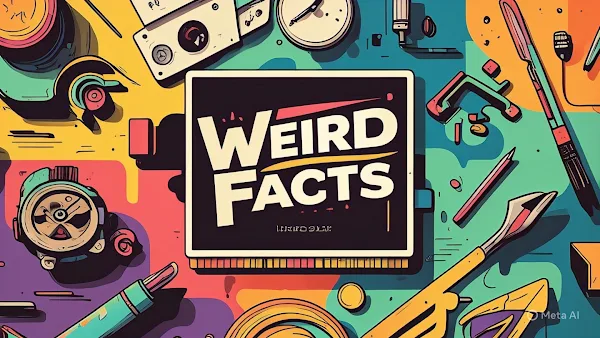13 Food Facts That Will Ruin Your Appetite

Unveiling the Secret Life of Your Favorite Foods
Ever wondered what secrets your favorite foods might be hiding? There's always more to food than meets the eye, and sometimes, the truth can be a little unsettling. In this article, we will delve into some of the most surprising food facts that might just spoil your appetite. These intriguing insights will make you think twice the next time you reach for a snack. But don't worry, knowledge is power, and understanding these facts can help you make healthier choices. So, let's get started.
1. The Truth About Red Food Coloring
From candies to beverages, the allure of red food is undeniable. However, you might lose your appetite when you discover the source of this vibrant hue. Some red food colorings are made from crushed bugs, specifically the cochineal insect. The extract, known as carmine, is a common additive that might just make you rethink your next red velvet cake.
2. The Hidden Ingredient in Bread
Human hair or duck feathers might not be on the ingredient list of your favorite bread, but they might be in it. A compound called L-cysteine, used as a dough softener in some commercial bread production, is often derived from these sources.
3. The Secret Life of Honey
Essentially, honey is bee vomit. Bees consume nectar, partially digest it, and then regurgitate it to create honey. If you can get past this fact, honey is still a delicious and healthier alternative to refined sugar.
4. The Dark Side of Jelly Beans
Jelly beans may lose their appeal when you find out that their shiny coating is made from shellac. This substance is derived from the secretions of the female lac bug. It's also commonly used in wood varnish.
5. The Mystery of Chewing Gum
Ever wondered why chewing gum doesn't dissolve in your mouth? One of the main reasons is an ingredient called lanolin, which is a waxy substance secreted by the sebaceous glands of sheep. It helps keep the gum chewy and prevents it from dissolving.
6. The Truth About Canned Mushrooms
The FDA allows a certain amount of maggots in canned mushrooms. Although it's a small amount, the thought of finding these unwanted guests in your mushrooms is enough to ruin your appetite.
7. The Hidden World of Chocolate
Chocolate might contain more than just cocoa and sugar. According to the FDA, a small amount of insect fragments and rodent hairs are permissible in a chocolate bar. This is because cocoa beans are susceptible to pests during storage and processing.
8. The Secret of Vanilla Flavor
Castoreum, a substance extracted from the anal glands of beavers, is sometimes used as a substitute for vanilla flavor. It's usually listed as "natural flavoring," so you may never know that you're consuming it.
9. The Truth About Beer and Wine
Isinglass, a gelatin-like substance obtained from the dried swim bladders of fish, is often used to clarify beer and wine. Vegans and vegetarians might find this fact particularly unappetizing.
10. The Hidden Ingredients in Fast Food
Fast food is often laden with hidden ingredients. For instance, a typical fast food milkshake can contain more than 50 chemicals, including cellulose gum (used to make the shake thick) and ethyl acetate (a flavoring agent that is also used in nail polish remover).
11. The Secret of Fruit Juice
Most commercial fruit juices aren't fresh at all. They're often stored for a year without their natural flavors. These flavors are later added back using "flavor packs" created by flavor and fragrance companies.
12. The Truth About Sausages
Sausages often contain meat by-products, which are parts of an animal that aren't typically consumed, such as organs, blood, and even brains. These parts are ground up and used in the sausage mixture.
13. The Secret of Gelatin
Gelatin, found in products like jello and marshmallows, is made from boiling animal skin, bones, and connective tissue. This fact might make these sweet treats less appealing to some.
Conclusion
While these facts might make you feel a bit queasy, they're an important reminder of what we're putting into our bodies. It's always a good idea to read labels and understand what we're consuming. After all, we are what we eat. By being aware of these facts, we can make more informed decisions about our diet and maintain a healthier lifestyle.
